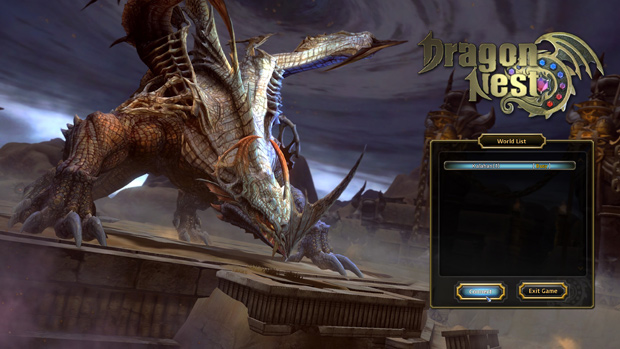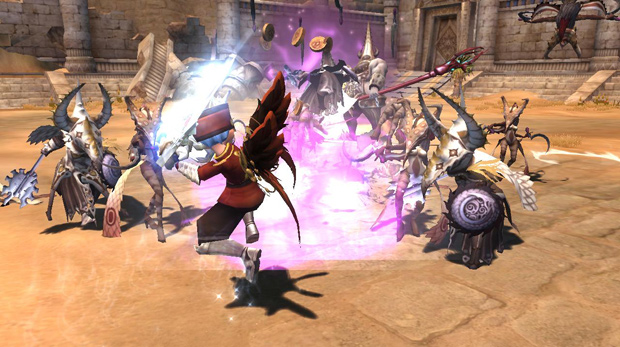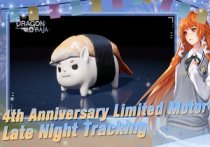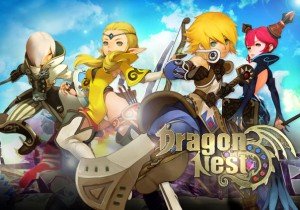Dragon Nest Updated Review

With action MORPGs becoming even more mainstream in the F2P market, it’s now time to take a look back at one particular action MORPG that appeared on western shores several years ago, arguably starting the craze. Dragon Nest is developed by Eyedentity games and published by Nexon America. It now features six different class types, multiple sub-classes and a level 60 cap that will give players weeks of monsters to beat up along the way.
Customization
Initial character creation comes with few options. Players will have the choice between a handful of face types, clothing and hair colors. Besides the six classes you can choose from, which are all gender locked, there are no other options available to make your player stand out from the get-go. The only way to make your character look unique is by obtaining avatar items from completing special quests and events, or by purchasing them from the Dragon Vault. The only issue with both these methods is that avatar items earned by events and quests are only temporary, and the ones from the Dragon Vault can only be obtained using real money or with “Dragon Scales”, another form of currency that can be earned from events, but have a set expiration date.
What may also raise concerns is that avatar items generally have extra stats tied to them. This could be seen as a form of buying power, but combat in Dragon Nest puts a fair emphasis on skill over stats and in some cases, players with those extra stats can be subjected to equalized PvP which will render those extra stats as meaningless.
Of course, if a player still needs those extra stats in order to feel adequate, but doesn’t have the time, money or scales to obtain them, they could always “beg” another player in order to get them.
No seriously.. The Dragon Vault comes equipped with the option to beg other players for items from the shop.
How convenient!
Other forms of customization include enchantments and lustres that can be used to enhance and unlock extra stats or passive abilities for equipment. These items can be found just about everywhere, and players will always end up with at least one of these in their inventory by the end of a single dungeon run.

Controls
The combat system uses a familiar TPS style control scheme, which means WASD is for movement, spacebar for jumping and mouse for aiming primary and secondary attacks. Getting a hang of the default control scheme will be easy enough if the player has ever tried an FPS or TPS game before, but later on, it may become a challenge in of its own. Around LV15 when sub-classes become available, players will gain access to several different skills that can be activated using the 1 through 0 keys. These skills can have multiple uses and can be activated several times before initiating cooldowns. Due to the game’s fast-paced nature, it can be fairly difficult to execute the right move at the right time, because when every enemy on screen is gunning for the player’s head, there may be times when the player will end up pressing the wrong skill at the right time, and getting used to a default control scheme like this almost feels like learning how to touch type for the first time in grade school. In short, the default control scheme for Dragon Nest is simply not up to the task, so players should re-configure their controls to better suit the gameplay.

Gameplay and Features
Compared to many other action MORPGs, Dragon Nest has one of the fastest combat systems out there. Players can run, jump, batter, bruise and destroy everything at a breakneck pace. The game even rewards players with points for destroying as much as they can, as fast as they can, right before defeating the final boss of each instance. Another element that makes Dragon Nest’s combat so enjoyable is that almost every attack can be cancelled on hit or after, allowing players to extend combos and juggles near endlessly.
Since combat uses a TPS style control scheme, attacks (for the most part) will need to be on-point in order for them to connect. Even melee classes will have to aim and watch their distance between themselves and their enemies in order to play effectively. One downside with Dragon Nest’s combat, however, is that skills have cooldown timers attached to them. While the intentions for these cooldowns are obviously to prevent exploits such as infinite combos (since nobody wants to watch helplessly as their character gets destroyed in a huge 100% to 0% HP juggle), this also prevents the gameplay from reaching heights of crazy combat that were made possible in games such as Devil May Cry 3 and 4, which would have really made Dragon Nest stand out even more, PvE wise.
PvP modes are available as early as LV10, and it’s a whole different ball game compared to PvE. Along with the insanely long juggle combos, PvP combat is just as hectic and fast-paced, but one major difference is that players now have to deal with a damage threshold meter during combat. This meter determines how long a player can combo an enemy before they become temporarily immune to damage, so players must figure out how to maximize damage and which moves work best to create the perfect combo sandwich.
There are a handful of different game modes and options to choose from in PvP, such as objective based game modes similar to Capture the Flag, or classic modes like Free-For-Alls and Team Deathmatch. One feature that will help ease new players into PvP, as well as (attempt to) create a fair playing field is the equalized stat option. Players that are just starting out can have the same stats as a player who is already at max level. Of course, higher level players will still have a considerable advantage over low levels simply due to the fact that they’ll have a much wider array of skills and abilities at their disposal.
Interestingly enough, it seems that each class type in PvP could be considered a particular archetype in a fighting game. Since the warrior is the only class that can perform a running sprint on the ground, they could be considered a “rush down”-type character, the archer mainly uses ranged attacks which could count as a zoning-type, the mage who uses teleports could be seen as a dynamic “keep away”-type character, and so on.
Killing wave after wave of enemies in Dragon Nest has a satisfying feel as every hit gives a real sense of impact. Despite this, repetition does set in early, as the game will send players off to revisit dungeons that they’ve already completed multiple times. Even as early as LV5, I was sent off to battle in a low-tier dungeon about four times in order to complete all main and sub-quests I had for it. As per usual, the best way to combat the repetition is by playing the game with some good friends, or just random folks in general since players will be able to breeze through at a much faster rate, but it only helps by a small amount as quests will continue to be piled on and on as players progress. The amount of quests that players will have access to are so plentiful that most players will be overleveled by the time the quest is completed.
Now with these types of action MORPGs, I would usually say that skill can only get a player so far when stats are involved, but honestly, the challenges in Dragon Nest did not feel artificially overwhelming like in recent action MORPGs that I’ve played, in that a single player could handle almost any dungeon on any difficulty rating as long as they were skilled enough to go through. (Or at least that’s how I felt before reaching Saint’s Haven at LV24.)

Visuals and Presentation
The visuals for Dragon Nest have this nostalgic look and feel to it, almost seemingly like an early Dreamcast game. It’s certainly nice to have another F2P online game that’s brimming with life and color, but the low quality of the textures and the low polygon count could have been bumped up a tad bit to make the game feel a little bit more presentable. Still, the benefit for having these kinds of visuals will mean that Dragon Nest should hold up well on many older PC builds.
The sound design is also fairly decent, with voice acting that comes off as cheesy, but it also helps to give Dragon Nest a bit of personality. Music that plays during battles is engaging enough, but comes off as generic and ultimately forgettable.
Community
Dragon Nest’s community features come complete with friend lists, player guilds, custom chat channels and even a farming area for players to hang out and socialize in. Anyone that has a competitive side will also enjoy various guild vs. guild competitions, along with weekly/monthly ladder rankings. There’s even a mentor system for players to learn and grow from others as they level up and earn extra goodies on the side.
As for the actual community: There’s a fair amount of friendly players that are willing to help newbies out. Occasionally, you may run into a few salty individuals, especially during PvP sessions, but these kinds of players are few and far between.
Overall: Great (4/5)
Besides from a few quirks, Dragon Nest provides an enjoyable experience with fast-paced gameplay that many other action MORPGs barely come close to reaching. Whether you’re a casual or competitive gamer that wants a good action fix, Dragon Nest in the year of 2014 will do nicely to fit the bill.
Articles You May Enjoy
- Remnant Knights to Bring Fullmetal Alchemist Gear
- On the eve of San Diego Comic-Con 2013, GameSamba is excited to announce that the worlds of Fullmetal Alchemist: Brotherhood and the free-to-p...
- Digimon Masters Celebrates First Anniversary
- Joymax is celebrating the first year anniversary of Digimon Masters Online.
- Atlas Releases Blackwood Map
- ATLAS has released a new free DLC that introduces a new expansion map, Blackwood.
















